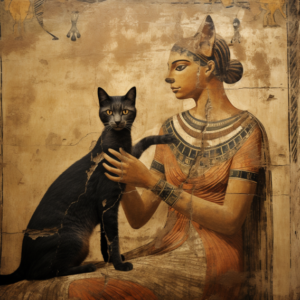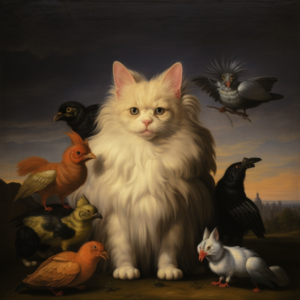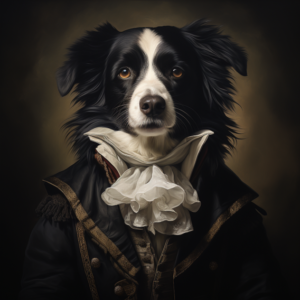The art of pet portraiture has a rich and fascinating history that spans centuries. It’s a testament to the enduring bond between humans and their animal companions. In this journey through time and artistic evolution, we’ll explore how pet portraits have evolved from the Renaissance period to the modern era, reflecting changes in society, artistic styles, and our relationship with pets.
The Renaissance and the Birth of Pet Portraiture
The Renaissance period, spanning from the 14th to the 17th century, marked a significant turning point in the history of art. It was during this era that pet portraits began to emerge as a distinct genre. In the context of the Renaissance, where realism and humanism were celebrated, pets found their place in art.
One of the earliest and most iconic examples of a Renaissance pet portrait is “Lady with an Ermine” by Leonardo da Vinci. Painted around 1489-1490, this masterpiece features Cecilia Gallerani, the young mistress of Ludovico Sforza, Duke of Milan, holding a white ermine. The ermine was a symbol of purity and was associated with the duke’s coat of arms.
The Victorian Era: Pets as Family Members
As we move forward in time to the 19th century, the Victorian era brought about significant changes in the perception of pets. They were no longer merely status symbols; they became cherished family members. This shift in attitude was reflected in the art of the time.
One notable example from this period is “Dignity and Impudence” by Sir Edwin Landseer, painted in 1839. This portrait features two dogs, a noble St. Bernard and a mischievous Dandie Dinmont Terrier. The contrast between the two dogs highlights their distinct personalities and the Victorian fascination with pets’ individual characters.
The Modern Era: Pets in Contemporary Art
As we enter the modern era, pet portraiture has continued to evolve. Contemporary artists have explored new mediums and styles, reflecting the changing dynamics of pet ownership and the broader cultural landscape.
One striking example is the photography of William Wegman, known for his portraits of Weimaraner dogs. Wegman’s playful and often surreal compositions have elevated pet photography to an art form. His work challenges traditional notions of pet portraiture, blurring the line between the everyday and the extraordinary.
The Digital Age: Pets in the Age of Instagram
In the digital age, pets have found a new platform for their portraits—the internet, and social media, in particular. Platforms like Instagram have given rise to “pet influencers” with dedicated followers who eagerly await their daily dose of adorable pet portraits.
One such pet influencer is Grumpy Cat, whose real name was Tardar Sauce. With her perpetually grumpy expression, Grumpy Cat became an internet sensation, amassing millions of followers and even inspiring merchandise and books.
In this whirlwind tour through the evolution of pet portraits, we’ve witnessed how our furry, feathered, and scaly friends have left their paw prints on the canvas of art history. From the realism of the Renaissance to the whimsy of the modern era, pet portraits continue to capture our hearts and remind us of the enduring love we share with our animal companions.
In the next sections of this article, we’ll delve deeper into the techniques and stories behind other iconic pet portraits, each offering a unique glimpse into the timeless relationship between humans and their pets.
Stay tuned as we continue our exploration of the world of pet portraiture, where art and adoration intersect to create lasting masterpieces.



